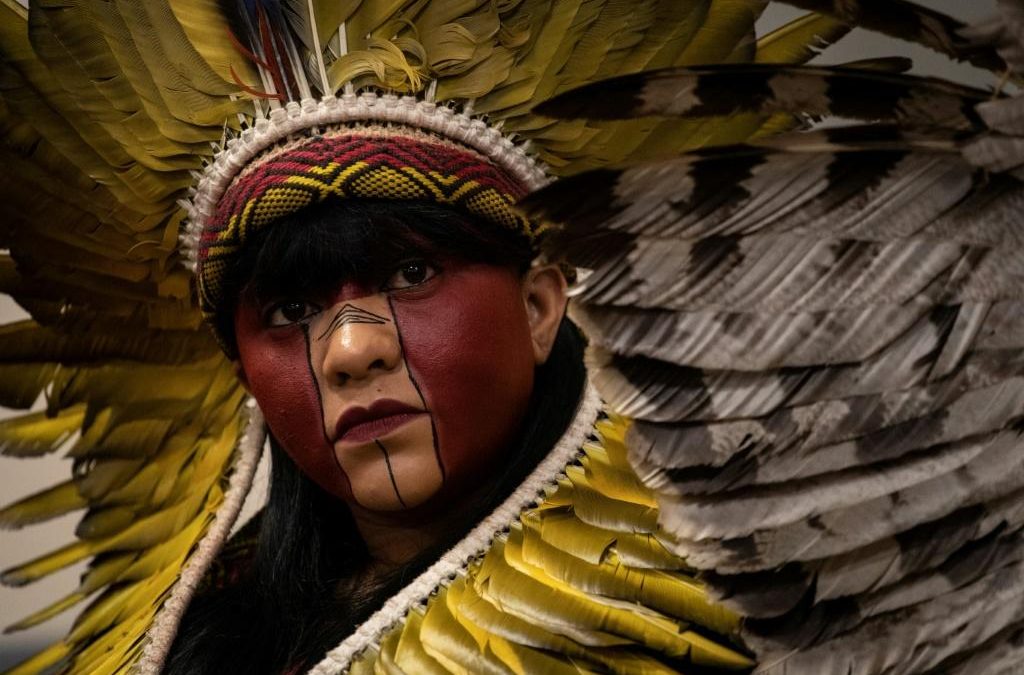City empties as thousands flee wildfire burning near capital of Canada’s Northwest Territories – Wildfires could persist for rest of “marathon” summer – “I don’t want to die, mommy”

By Tammy Webber and Jim Morris
18 August 2023
VANCOUVER, British Columbia (AP) – Residents heeded warnings to evacuate the capital of Canada’s Northwest Territories as a large wildfire burned just outside the city of 20,000 Friday, while firefighters battled a growing fire that set homes ablaze in a city in British Columbia.
Thousands of people in Yellowknife drove hundreds of kilometers (miles) to safety, with authorities guiding motorists through fire zones, while others waited in long lines lines for emergency flights as the worst fire season on record in Canada showed no signs of easing.
Airtankers flew missions to keep the only route out of Yellowknife open. Meanwhile, a network of fire guards, sprinklers and water cannons was established to try to protect the city from the fire.
Fire Information Officer Mike Westwick told The Associated Press by phone Friday evening that the fire did not advance Friday and was still 15 kilometers (9 miles) northwest of the the city, partly because cooler temperatures created less fire activity and cleared some smoke, allowing air tankers to safely fly and drop fire retardant.
Even so, “we’ve got the wrong kind of wind” in the forecast — gusty and from the west and northwest — and no rain, Westwick warned.
Shane Thompson, the territory’s minister of enviornment and natural resources, said more than 19,000 people had left Yellowknife in less than 48 hours. About 15,000 went by car and 3,800 flew out.
“This is an amazing achievement to evacuate so many people safely,” he said.

The fire, caused by lightning more than a month ago, is about 1,670 square kilometers (644 square miles) and “not going away anytime soon,” Westwick said, adding that the blaze had jumped three different containment lines, fueled by dry weather and dense forests.
Gas stations that still had fuel were open Friday, though the city was virtually empty, with one grocery store, a pharmacy and a bar still open.
“It’s kind of like having a pint at the end of the world,” said Kieron Testart, who went door-to-door in the nearby First Nation communities of Dettah and NDilo to check on people. Indigenous communities have been hit hard by the wildfires, which threaten important cultural activities such as hunting, fishing and gathering native plants.

Hundreds of kilometers (miles) south of Yellowknife, homes were burning in West Kelowna, British Columbia, a city of about 38,000, after a wildfire grew “exponentially worse” than expected overnight, the fire chief said.
Premier David Eby declared a state of emergency for the province because of the rapidly evolving wildfire situation.
“We are in for an etremely challenging situation in the days ahead,” Eby said at a new conference Friday evening.
He said the decree would give authorities a number of legal tools, including the power to prevent people from traveling into dangerous areas and ensure access to accommodations for evacuees and heavy equipment for fighting the fires.

Residents in West Kelowna had already been ordered to evacuate 2,400 properties, while an additional 4,800 properties were on evacuation alert. The BC Wildfire Service said the fire grew six times larger overnight and it stretched over 68 square kilometers (26 square miles).
Some first responders became trapped while rescuing people who failed to evacuate, said Jason Brolund, chief of the West Kelowna fire department, who said residents face another “scary night.” There was no known loss of life.
“There were a number of risks taken to save lives and property last night,” Brolund said at a news conference, describing how first responders had to rescue people who jumped into a lake to avoid the flames. “It didn’t have to be that way.”
Bowinn Ma, the province’s minister of emergency management, said at a news briefing Friday afternoon that “we are still faced with great challenges.”
“I was deeply horrified to witness the distressing images emerging from West Kelowna,” she said. “The past 24 hours have been incredibility challenging for the people across the province.”
In Yellowknife, emergency officials worried that conditions could change and propel the fire — one of hundreds raging in the territory — to the city limits.
Mayor Rebecca Alty said she understands the emotional roller-coaster being experienced by the city’s residents.
“Unfortunately, the journey isn’t done yet,” she said. “The fire continues to approach and the uncertainty of when you’ll be able to return will be difficult.”
Alice Liske left Yellowknife by road with her six kids earlier this week because the air quality was so bad. She had worried if so many people could flee the city in such a short time.
“Not only that,” she said, “but when we go back, what will be there for us?”

Canada has seen a record number of wildfires this year — contributing to choking smoke in parts of the U.S. — with more than 5,700 fires burning more than 137,000 square kilometers (53,000 square miles) from one end of Canada to the other, according to the Canadian Interagency Forest Fire Centre.
As of Friday morning, more than 1,000 wildfires were burning across the country, over half of them out of control.
Prime Minister Justin Trudeau met with his incident response group Thursday. He asked ministers to work to ensure communication services remained available and said there would be no tolerance for price gouging on flights or essential goods.

About 6,800 people in eight other communities in the Northwest Territories had already evacuated their homes, including the small community of Enterprise, which was largely destroyed. Officials said everyone made it out alive.
A woman whose family evacuated the town of Hay River on Sunday told CBC that their vehicle began to melt as they drove through embers, the front window cracked and the vehicle filled with smoke that made it difficult to see the road ahead.
“I was obviously scared the tire was going to break, our car was going to catch on fire and then it went from just embers to full smoke,” said Lisa Mundy, who was traveling with her husband and their 6-year-old and 18-month-old children. She said they called 911 after they drove into the ditch a couple of times.
She said her son kept saying: “I don’t want to die, mommy.”
City empties as thousands flee wildfire burning near capital of Canada’s Northwest Territories
Canada wildfires could persist for rest of “marathon” summer
By Ismail Shakil
11 August 2023
OTTAWA (Reuters) – Record-setting wildfires in Canada could potentially continue burning at an abnormally high rate for several more weeks, though the spread of blazes is likely to start diminishing in September, according to federal projections released on Friday.
Forest fires have engulfed parts of nearly all 13 Canadian provinces and territories this year, forcing home evacuations, disrupting energy production, and drawing in federal as well as international firefighting resources. Four firefighters have been killed in the line of duty.
So far about 134,000 square kilometers (52,000 square miles) of land have been scorched, more than six times a 10-year average, and nearly 168,000 people have been forced to evacuate at some point this season.
“This summer has turned into a challenging marathon,” Canadian Forest Service official Michael Norton told a media briefing on Friday.
“Our most recent projections indicate the potential for higher-than-normal fire activity remains across much of Canada in August and September,” Norton said.

Norton said the simultaneous flaring up of blazes across the country was “virtually unheard of” and largely due to drought conditions that continue to intensify in some areas and will contribute to ongoing fire activity through late summer.
“In September, we anticipate that the potential area at extreme risk will become a bit smaller … (however) large existing fires will continue burning or smoldering and new problematic fires can occur anywhere.”
The fires have also sent plumes of smoke across Canadian and U.S. skies, raising health alarms and concerning scientists about the impact on the atmosphere.
The EU’s Copernicus Atmospheric Monitoring Service estimated last week that Canadian wildfires have released 290 million metric tons of carbon, over 25% of the global total for 2023 to date, and emissions are set to rise as hundreds of flames rage on.
Canadian wildfires could persist for rest of ‘marathon’ summer

